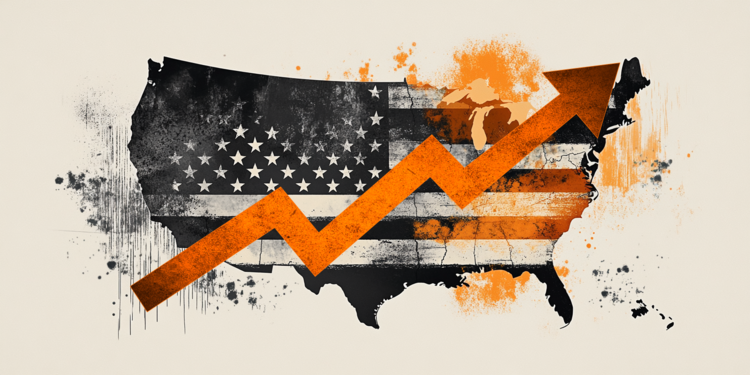The results of the Digital Economy and Society Index (DESI) for 2021, which records the progress made in the EU Member States in terms of digital competitiveness in the areas of human capital, broadband connectivity, digital technology integration by businesses and digital public services, the European Commission announced today.
The DESI 2021 report presents data from the first or second quarter of 2020, mostly, which outline the key developments in the digital economy and society during the first year of the COVID-19 pandemic. However, the effects of COVID-19 on the use and provision of digital services and the effects of the policies implemented since then are not reflected in the data and will be more apparent in the 2022 version.
All EU Member States have made progress in the field of digitization, but the overall picture between Member States is heterogeneous and, despite relative convergence, the gap between EU leaders and those with the lowest DESI scores remains large. Despite these improvements, all Member States will have to make a concerted effort to meet the 2030 targets set out in Europe’s Digital Decade.
THE Executive Vice President for a Europe Ready for the Digital Age, Margaret Westeyer“The message of this year’s index is positive, all EU countries have made some progress in increasing their digitization and competitiveness, but more can be done. So we are working with the Member States to ensure that key investment through the recovery and resilience mechanism, to make the best possible use of digital opportunities for all citizens and businesses. ”
Mr. Thierry Breton, Commissioner for the Internal Market“Setting our targets for 2030 was an important step, but we must now achieve results. Today ‘s DESI shows progress, but also what areas we can collectively improve to ensure that Europe’ s citizens and businesses, SMEs, in particular, can have access to cutting-edge technologies that make their lives better, safer and greener. ”
DESI 2021 has been adapted to capture important policy initiatives, such as the Digital Compass of 2030: the European approach to the digital decade, which sets out Europe’s ambition in the digital sector and presents a vision for digital transformation, as well as specific objectives for 2030 in the four main areas: skills, infrastructure and digital transformation of business and public services.
Towards the Digital Decade, a policy program adopted in September 2021, sets out an innovative form of governance with the Member States, through an annual cooperation mechanism between the EU institutions and the Member States to ensure that ambitions are shared together. their. “The Road to the Digital Decade” entrusts the monitoring of digital decade goals to DESI and, as a result, DESI indicators are now structured around the four main points of the Digital Compass.
Under the Recovery and Sustainability Facility (MAA), EU Member States are committed to spending at least 20% of their national sponsorships on the Digital Recovery and Sustainability Plan, and so far they have achieved or far exceeded this target. The country-wide DESI reports include a summary of digital investments and reforms included in the 22 recovery and resilience plans already approved by the Council.
Main findings of DESI 2021 in the four areas
Regarding digital skills, 56% of people in the EU have at least basic digital skills. The figures show a slight increase in the number of ICT specialists in the active population: in 2020, the EU had 8.4 million ICT specialists compared to 7.8 million the previous year. With 55% of businesses reporting difficulties in hiring ICT specialists by 2020, this shortage of staff with advanced digital skills is also contributing to the slower digital transformation of businesses in many Member States. The data clearly show that training offers and opportunities need to be increased in order to achieve the digital skills decade goals (basic digital skills for 80% of the population and 20 million ICT specialists). Significant improvements are expected in the coming years, in part because 17% of the digital investment in recovery and resilience plans approved by the Council so far is for digital skills (around EUR 20 billion out of a total of EUR 117 billion).
The Commission also published today the scoreboard for women in the digital age, which confirms that there is still a significant gender gap in specialized digital skills. Only 19% of ICT specialists and about one third of science, technology, engineering and mathematics graduates are women.
The data for connectivity show that “very high capacity networks” (VHCNs) are improving; in particular, these networks are available to 59% of households in the EU, up from 50% a year ago, but target of the digital decade for 2030). In rural areas, VHCN coverage increased from 22% in 2019 to 28% in 2020. In addition, 25 Member States have allocated part of the 5G frequency range, compared to 16 Member States a year ago. 5G was marketed in 13 Member States, covering mainly urban areas. Today, the Commission also published studies on mobile and fixed broadband prices in Europe in 2020, with broadband coverage by June 2020 and with national broadband plans. It is worth noting that 11% of digital investment in recovery and resilience plans approved by the Council (around EUR 13 billion out of a total of EUR 117 billion) is for connectivity.
Regarding the integration of digital technologies, there was a large increase in the use of cloud computing technologies (from 16% of companies in 2018 to 26% in 2020). Large companies are still pioneering the use of digital technologies: for example, they use electronic information exchange through enterprise resource design (ERP) and cloud computing software much more often than SMEs (80% and 35% respectively for ERP and 48% versus 25% respectively for cloud computing). However, only a small percentage of businesses use advanced digital technologies (14% bulk data, 25% TN and 26% cloud computing). These figures show that the current degree of digital technology adoption is far from the goals of the digital decade; the EU’s ambition for 2030 is for 90% of SMEs to have at least a basic level of digital intensity, up from 60% in 2020, and at least 75% of businesses to use advanced digital technologies by 2030. Currently, only a small fraction of companies use mass data even in several of the best performing countries, contrary to the 75% target. It is important to note that about 15% of digital investment in recovery and resilience plans approved by the Council (almost EUR 18 billion out of a total of EUR 117 billion) is for digital capabilities and digital research and development.
The data from the DESI report complements a study published today on research into the contribution of ICT to the environmental sustainability actions of EU companies, which reveals that more than 66% of companies surveyed said they use ICT solutions as a means reducing their environmental footprint.
The data for digital public services do not yet show significant improvement in e-government services. During the first year of the pandemic, several Member States set up or enhanced digital platforms to provide more online services. 37% of digital investment, under the recovery and resilience plans approved by the Council (approximately EUR 43 billion out of a total of EUR 117 billion) is earmarked for digital public services, with significant improvements expected in the coming years. The Commission has also released the 2021 eGovernment Benchmarking Report, which surveys citizens in 36 European countries on the use of digital public administration services.
.
Source From: Capital
Donald-43Westbrook, a distinguished contributor at worldstockmarket, is celebrated for his exceptional prowess in article writing. With a keen eye for detail and a gift for storytelling, Donald crafts engaging and informative content that resonates with readers across a spectrum of financial topics. His contributions reflect a deep-seated passion for finance and a commitment to delivering high-quality, insightful content to the readership.







